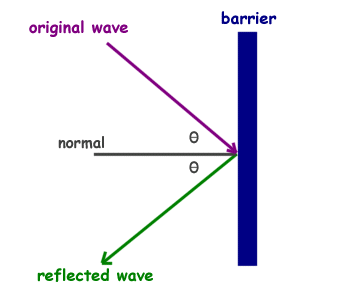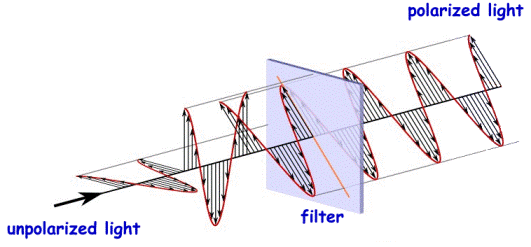What is Wave Behavior?
When waves encounter new vehicles, barriers, or other waves, they can behave in different ways. In physics, these behaviors are described in some terms which we have provided below.
Reflection
The word “reflection” is used in everyday life to describe what we see in a mirror or on water. In physics, reflection occurs when a wave encounters a new medium that acts as a barrier, causing the wave to return to its original medium. The wave “reflects” off the barrier at an angle that coincides with the angle of the wave hitting the barrier.
Refraction
Wave refraction occurs when a wave changes direction when traveling from one medium to another. Along with the direction change, refraction also changes the wavelength and speed of the wave. The degree of change of the wave due to refraction depends on the refractive index of the medium.
An example of a refraction is a prism. When white light enters the prism, light of different wavelengths is refracted. Different wavelengths of light are refracted differently and the light is divided into a color spectrum.
Diffraction
Diffraction occurs when a wave is in the same medium, but bends around an obstacle. This can happen when the wave encounters a small object in its path or when the wave is forced through a small opening. An example of diffraction is when a wave of water hits a boat and curves around the boat. The waves behind the boat are modified or diffracted.
Polarization
Polarization is when a wave oscillates in a particular direction. Light waves are usually polarized using a polarizing filter. Only transverse waves can be polarized. Longitudinal waves, such as sound, cannot be polarized because they always travel in the same direction as the waves.
In this image, unpolarized light waves pass through a filter and are then polarized along a plane.
Absorption
Absorption occurs when a wave comes in contact with the medium and causes the molecules in the medium to vibrate and move. This vibration absorbs or removes some energy from the wave and less energy is reflected.
An example of absorption is a black pavement that absorbs light energy. Black pavement becomes hot by absorbing light waves and reflecting less light, making the pavement appear black. A white painted line on the sidewalk will reflect more light and absorb less light. As a result, the white stripe will be less hot.
Interference
When one wave comes into contact with another, it is called interference. When two waves meet, the resulting wave will have an amplitude equal to the sum of the amplitudes of the two interfering waves.
Depending on the phase of the wave, the interference can be either positive or negative. If the received wave has a higher amplitude than the interfering waves then it is constructive interference. If it has a lower amplitude, it is called destructive interference.



